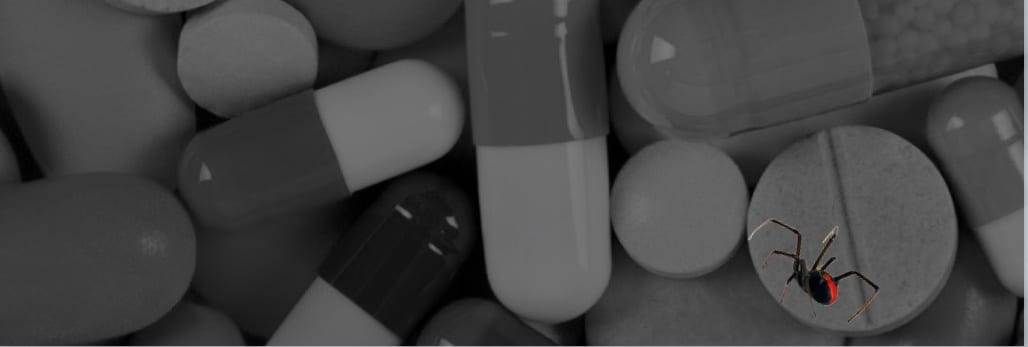Sniff a poison challenge
aka Toxicology Conundrum 027
As you review a patient you notice an unusual scent about his person…welcome to the ‘Sniff a Poison‘ Challenge!
How this works
Below is a list of odo(u)rs. For each different odour try to identify the poison(s) or toxin(s) that can give rise to it – then click on the odour (in blue) to show/hide the answer. If there are multiple answers, the number of answers listed is shown in brackets.
…Start sniffing!
Ammonia
- ammonia
- (its good to get off to an easy start…)
Bitter almonds
- cyanide
- (40% of people are genetically incapable of smelling this)
Burnt rope (2)
- marijuana
- opium
Disinfectant (2)
- phenol
- creosote
Fruity (12!)
- nitriles
- isopropyl alcohol
- ketoacidosis
- lacquer
- ethanol
- isopropanol
- chloroform
- trichloroethane
- paraldehyde
- chloral hydrate
- methylbromide
- nitrites (amyl, butyl)
Garlic (7)
- phosphorus
- tellurium
- inorganic arsenicals and arsine gas
- organophosphates
- selenium
- thallium
- dimethyl sulfoxide
Fish or raw liver (musty) (3)
- zinc phosphide
- aluminum phosphide
- nickel carbonyl
Hay
- phosgene
Mint (2)
- methylsalicylate (Oil of Wintergreen)
- menthol
Mothballs (3)
- napthalene
- camphor
- p-dichlorobenzene
Pear
- chloral hydrate
Pepper
- o-chlorobenzylidene malonitrile (CS or tear gas)
Pine
- pine oil
Rotten eggs (5)
- Hydrogen sulfide (olfactory fatigue occurs after about 15 minutes at the potentially toxic level of 50 ppm. This happens even faster at higher concentrations – so the victim is at least spared the stench of rotten eggs…)
- carbon disulfide
- mercaptans
- disulfiram
- N-acetylcysteine (antidote)
Shoe polish
- nitrobenzene
Tobacco
- nicotine!
Vinegar (2)
- acetic acid
- hydrofluoric acid
Violets
- turpentine (urinary metabolites)
The bonus question:
Q. A bite by which Australian snake could seriously impair your performance on the ‘Sniff a Poison’ challenge?
Show Answer
Potentially any of the venomous elapids in Australia as they their bites may be lethal!
However, at least one species can specifically impair the victim’s sense of smell: the Red-bellied Black Snake, Pseudechis porphyriacus, one of Australia’s most striking and beautiful snakes.
Victims may experience permanent alterations in their olfactory sense. Abnormalities include anosmia (loss of smell), cacosmia (the sensation of a foul smell – not good), dysosmia (a distorted perception of smell) and even phantosmia (the sensation of smell without stimulus).

References
- Flomenbaum N, et al (2006). Goldfrank’s Toxicologic Emergencies (8th edition). McGraw-Hill Professional.
- Sutherland SK, Tibballs J (2001). Australian animal toxins: the creatures, their toxins and care of the poisoned patient (2nd edition). Oxford University Press.
LITFL Toxicology Challenges
- Toxidrome Challenge
- ‘Sniff a poison’ challenge
- Snakebite Envenoming Challenge
- The Antidote Challenge

CLINICAL CASES
Toxicology Conundrum
Chris is an Intensivist and ECMO specialist at The Alfred ICU, where he is Deputy Director (Education). He is a Clinical Adjunct Associate Professor at Monash University, the Lead for the Clinician Educator Incubator programme, and a CICM First Part Examiner.
He is an internationally recognised Clinician Educator with a passion for helping clinicians learn and for improving the clinical performance of individuals and collectives. He was one of the founders of the FOAM movement (Free Open-Access Medical education) has been recognised for his contributions to education with awards from ANZICS, ANZAHPE, and ACEM.
His one great achievement is being the father of three amazing children.
On Bluesky, he is @precordialthump.bsky.social and on the site that Elon has screwed up, he is @precordialthump.
| INTENSIVE | RAGE | Resuscitology | SMACC
